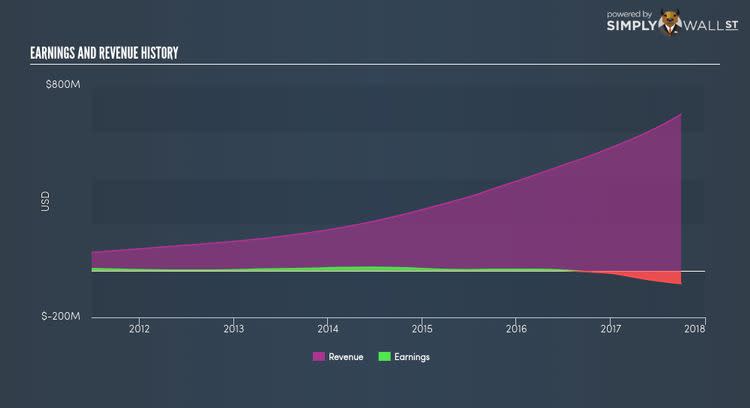Is Atlassian Corporation Plc’s (TEAM) CEO Incentives Align With Yours?

Scott Farquhar took the helm as Atlassian Corporation Plc’s (NASDAQ:TEAM) CEO and grew market cap to USD$11.72B recently. Understanding how CEOs are incentivised to run and grow their company is an important aspect of investing in a stock. Incentives can be in the form of compensation, which should always be structured in a way that promotes value-creation to shareholders. Today we will assess Farquhar’s pay and compare this to the company’s performance over the same period, as well as measure it against other US CEOs leading companies of similar size and profitability. See our latest analysis for TEAM
What has been the trend in TEAM’s earnings?
Earnings is a powerful indication of TEAM’s ability to invest shareholders’ funds and generate returns. Therefore I will use earnings as a proxy of Farquhar’s performance in the past year. Most recently, TEAM produced negative earnings of -$54M , which is a further decline from prior year’s loss of -$3M. Additionally, on average, TEAM has been loss-making in the past, with a 5-year average EPS of -$0.01. In the situation of negative earnings, the company may be going through a period of reinvestment and growth, or it can be an indication of some headwind. In any case, CEO compensation should represent the current condition of the business. From the latest financial statments, Farquhar’s total remuneration rose by a mere 3.38% to $322,603. Although I couldn’t find information on the composition of Farquhar’s pay, if some portion were non-cash items such as stocks and options, then fluxes in TEAM’s share price can move the real level of what the CEO actually receives.
Is TEAM’s CEO overpaid relative to the market?
Though no standard benchmark exists, since remuneration should account for specific factors of the company and market, we can estimate a high-level thresold to see if TEAM deviates substantially from its peers. This outcome helps investors ask the right question about Farquhar’s incentive alignment. Normally, a US large-cap has a value of $64.9B, produces earnings of $3.6B and pays its CEO circa $12.2M annually. Typically I would use earnings and market cap to account for variations in performance, however, TEAM’s negative earnings lower the usefulness of my formula. Analyzing the range of remuneration for Farquhar is remunerated sensibly relative to peers. On the whole, although TEAM is loss-making, it seems like the CEO’s pay is sound.
What this means for you:
Are you a shareholder? My conclusion is that Farquhar is not being overpaid. But your role as a shareholder should not end here. As above, this is a relatively simplistic calculation using high-level benchmarket. Proactive shareholders should question their representatives (i.e. the board of directors) how they think about the CEO’s incentive alignment with shareholders and how they balance this with retention and reward. To find out more about TEAM’s governance, look through our infographic report of the company’s board and management.
Are you a potential investor? Board members are the voice of shareholders. Although CEO pay doesn’t necessarily make a big dent in your investment thesis in TEAM, proper governance on behalf of your investment should be a key concern. These decisions made by top management and directors flow down into financials which impact returns to investors. To research more about these fundamentals, I recommend you check out our simple infographic report on TEAM’s financial metrics.
PS. If you are not interested in Atlassian anymore, you can use our free platform to see my list of over 50 sustainable companies producing great returns.
To help readers see pass the short term volatility of the financial market, we aim to bring you a long-term focused research analysis purely driven by fundamental data. Note that our analysis does not factor in the latest price sensitive company announcements.
The author is an independent contributor and at the time of publication had no position in the stocks mentioned.

